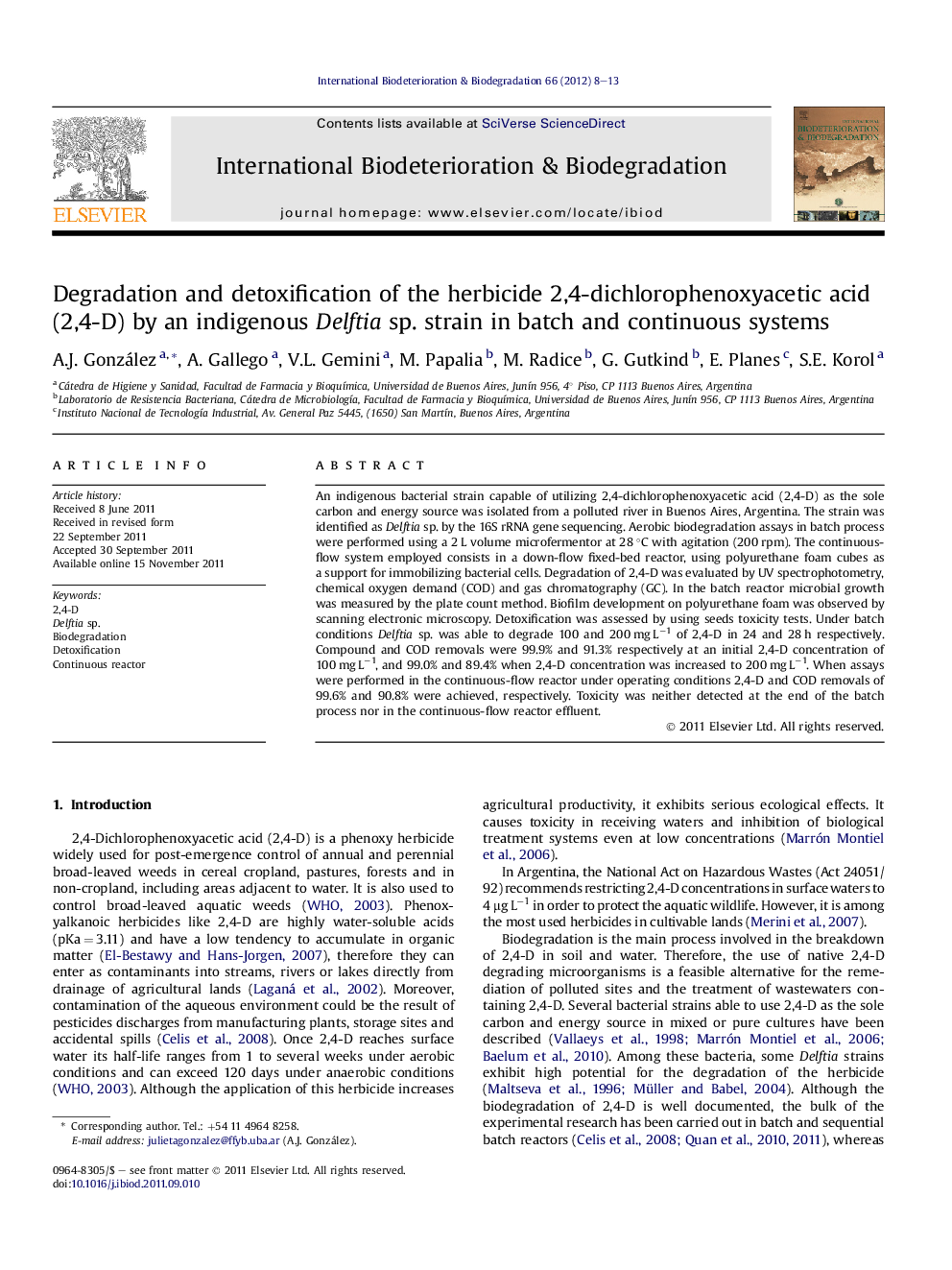| کد مقاله | کد نشریه | سال انتشار | مقاله انگلیسی | نسخه تمام متن |
|---|---|---|---|---|
| 4365354 | 1301755 | 2012 | 6 صفحه PDF | دانلود رایگان |

An indigenous bacterial strain capable of utilizing 2,4-dichlorophenoxyacetic acid (2,4-D) as the sole carbon and energy source was isolated from a polluted river in Buenos Aires, Argentina. The strain was identified as Delftia sp. by the 16S rRNA gene sequencing. Aerobic biodegradation assays in batch process were performed using a 2 L volume microfermentor at 28 °C with agitation (200 rpm). The continuous-flow system employed consists in a down-flow fixed-bed reactor, using polyurethane foam cubes as a support for immobilizing bacterial cells. Degradation of 2,4-D was evaluated by UV spectrophotometry, chemical oxygen demand (COD) and gas chromatography (GC). In the batch reactor microbial growth was measured by the plate count method. Biofilm development on polyurethane foam was observed by scanning electronic microscopy. Detoxification was assessed by using seeds toxicity tests. Under batch conditions Delftia sp. was able to degrade 100 and 200 mg L−1 of 2,4-D in 24 and 28 h respectively. Compound and COD removals were 99.9% and 91.3% respectively at an initial 2,4-D concentration of 100 mg L−1, and 99.0% and 89.4% when 2,4-D concentration was increased to 200 mg L−1. When assays were performed in the continuous-flow reactor under operating conditions 2,4-D and COD removals of 99.6% and 90.8% were achieved, respectively. Toxicity was neither detected at the end of the batch process nor in the continuous-flow reactor effluent.
► This paper focuses on the biodegradation of the herbicide 2,4-D by Delftia sp.
► The strain is able to degrade and detoxify the compound.
► The continuous reactor constructed has high efficiency in compound removal.
► Its low cost allows the transfer of results to their use in bioremediation processes.
Journal: International Biodeterioration & Biodegradation - Volume 66, Issue 1, January 2012, Pages 8–13